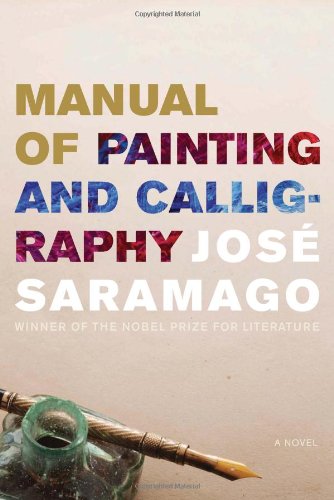Manual of Painting and Calligraphy
This early novel by Saramago, available in translation in the U.S. for the first time, is the perfect companion publication to Small Memories, a memoir of Saramago’s youth. Here, Saramago’s protagonist, known only as “H.,” explores his work as an artist while trying to capture his philosophy, his politics, his feelings, with words.
H. is a portrait painter—technically good, but artistically bland—earning a decent living in 1960s Portugal, near the end of Salazar’s repressive regime, painting likenesses of wealthy businessmen and other patrons. His work on the portrait of S., complicated only tangentially by a fling with S.’s secretary, Olga, brings him to the realization that he is not painting people as they are; he is just portraying the external visage while the true persona remains unknown and trapped. Thus begins his quest to show “the real,” rather than the surface, both in his portraits and himself.
This journey of self-discovery mirrors Saramago’s own early growth as a writer, as he experimented with voices and techniques, to eventually create his own narrative style. Some of the events recounted in Manual are autobiographical; it is fascinating to ponder how small actions in life can become turning points in a novel. H.’s exploration affects all aspects of his life, from his casual-but-satisfactory relationship with Adelina to the arrangement of furniture in his apartment to his growing political awareness. As he delves deeper into himself, his relationships change, and he makes a conscious career-changing decision to explicate the concepts of identity and freedom, both of his clients and himself.
Manual is an evocative, reflective story of the artist—and the author—in evolution, on the eve of personal and political revolution.










